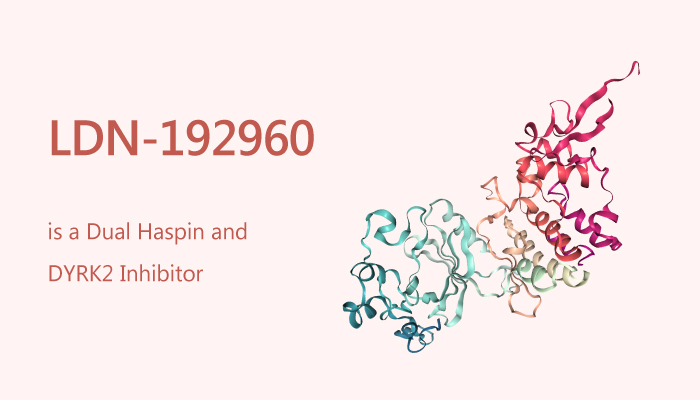Haspin is a serine/threonine kinase that phosphorylates Thr-3 of histone H3 in mitosis. This phosphorylation generates a binding site on H3 for Survivin. Thus, the positions the Chromosome Passenger Complex at centromeres regulate chromosome segregation, and it also displaces proteins such as TFIID. It normally bind to H3 through methylated Lys-4. Human haspin has ATP-binding and catalytic sites structurally similar to other members of the eukaryotic protein kinase (ePK) superfamily. Haspin kinase inhibitors may be useful probes for elucidating the cellular roles of this protein and may have therapeutic utility in treating cancer. CHR-6494 inhibits haspin displayed anti-tumor activity in a mouse xenograft model. Also, 5-iodotubercidin has been reported as an effective haspin kinase inhibitor. The authors utilize a time-resolved fluorescence resonance energy transfer high throughput screening assay to identify LDN-192960 as a potent haspin inhibitor.

In fact, LDN-192960 is a potent Haspin and DYRK2 dual inhibitor with IC50s of 10 nM and 48 nM, respectively. The dual-specificity tyrosine phosphorylation-regulated kinase (DYRK) family proteins are related to the MAPK family. However, the upstream kinases do not catalyze activating tyrosine phosphorylation of DYRK family kinases. But, it occurs through autophosphorylation. There is a growing interest in the role of DYRK family kinases in cancer. Because they can act as regulators of protein stability during the cell cycle and regulate the activity of the proteasome. LDN-192960 is a DYRK2/haspin inhibitor. Moreover, it strongly inhibits cell proliferation of four NB cell lines SKNBE, KELLY, SKNAS, and SKNFI in a dose-dependent manner.
In summary, LDN-192960 is a dual inhibitor of Haspin and DYRK2. Therefore, it may have potential therapeutic utility in treating cancer.
Reference:
Cuny GD, et al. Bioorg Med Chem Lett. 2012 Mar 1;22(5):2015-9.
Uhl KL, et al. Cancer Cell Int. 2018 Jun 7;18:82.